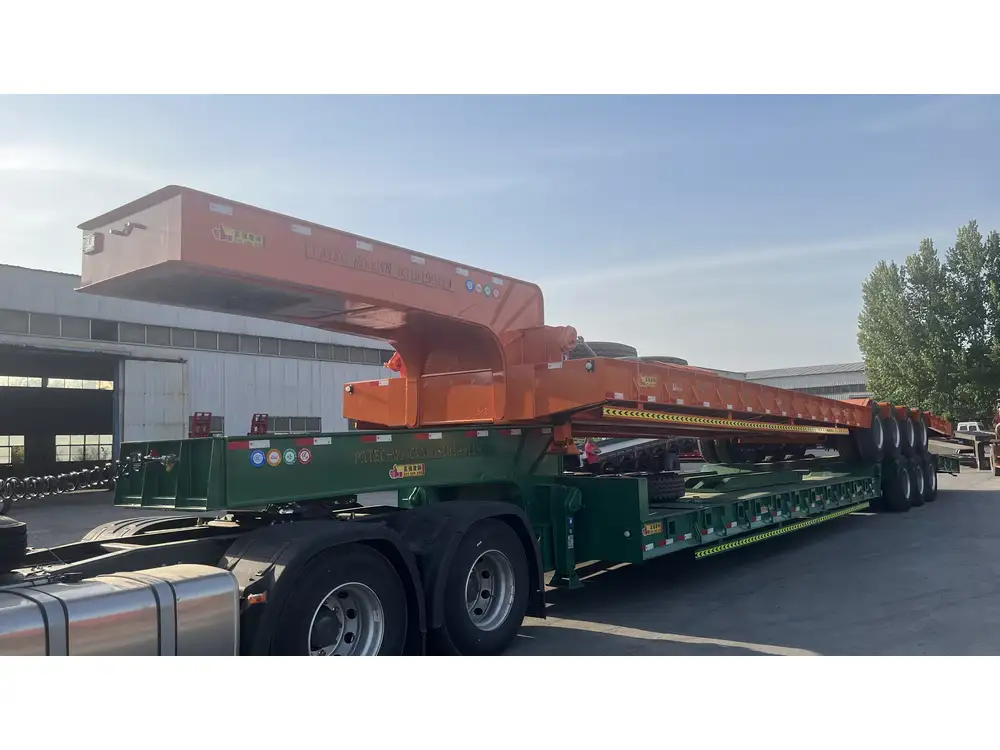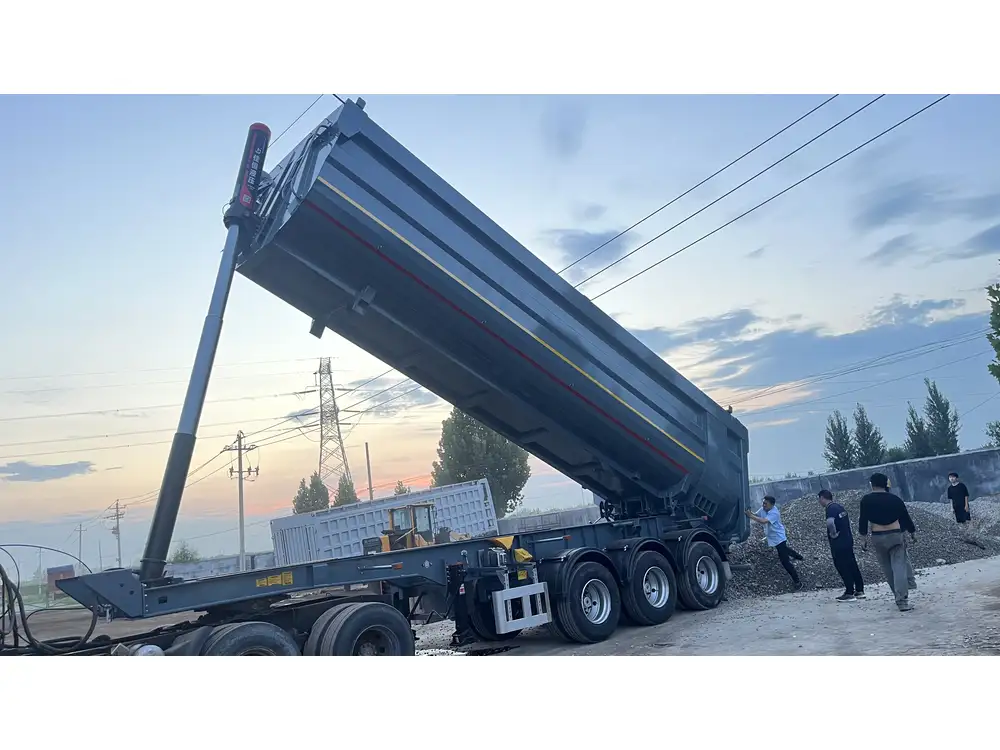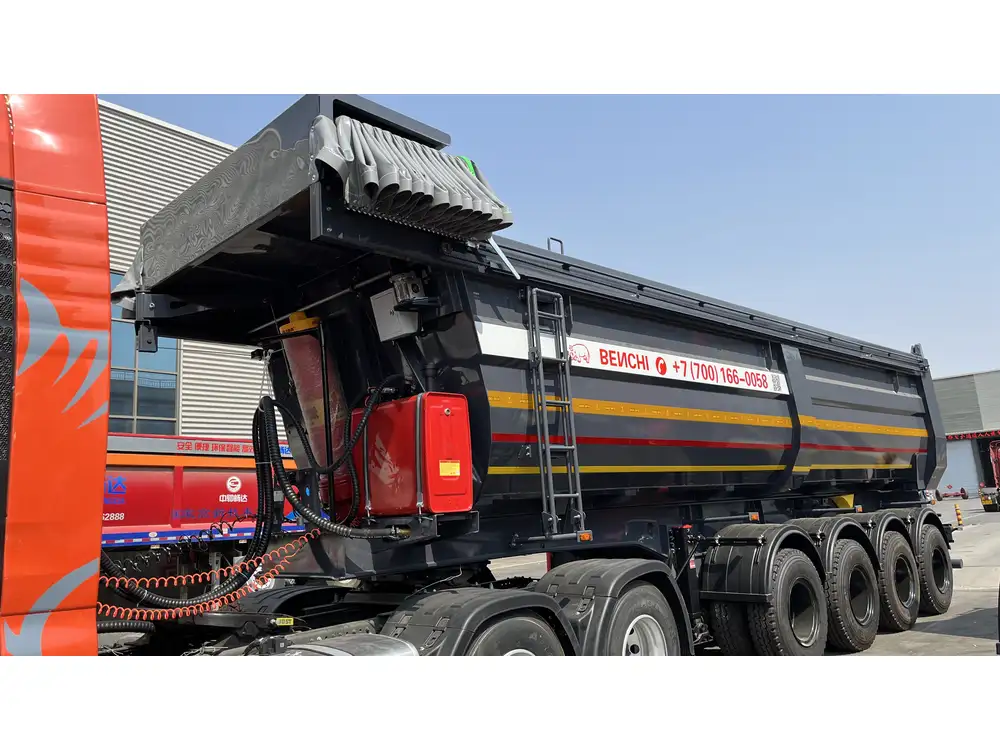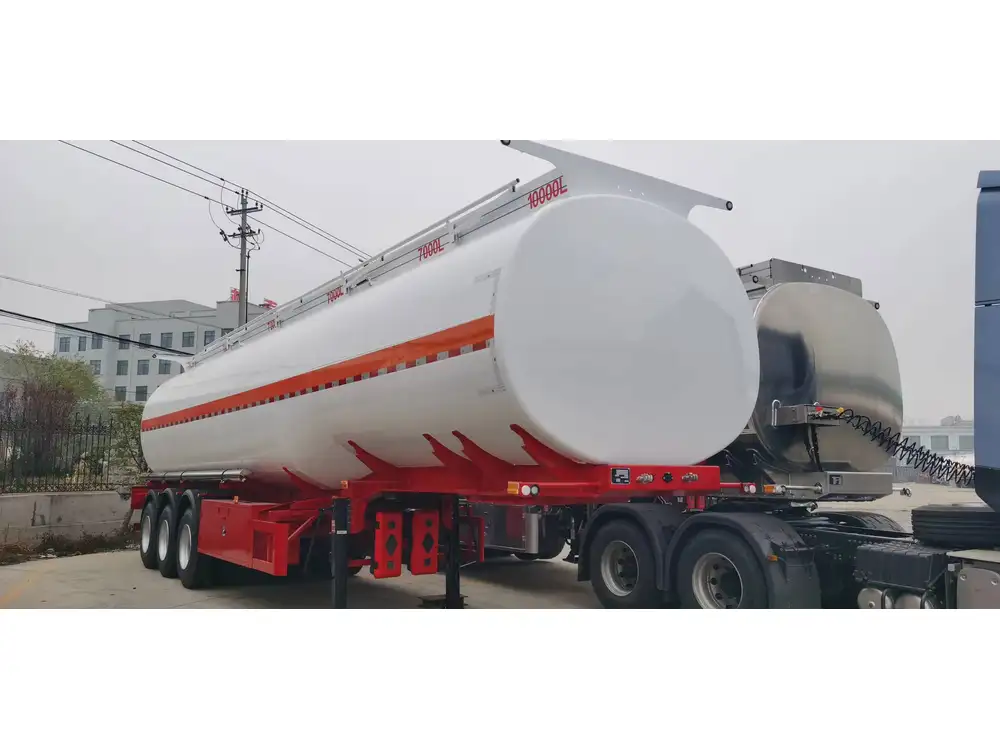When it comes to the transportation of goods, especially with flatbed trailers, the securing and transferring of loads is paramount. The safety of both the cargo and the hauler, as well as compliance with industry regulations, hinge on effective load transfer strategies. In this guide, we will delve deep into the methodology of transferring loads on flatbed trailers, addressing common challenges, and providing solutions that enhance safety and efficiency.
Understanding Flatbed Trailers
Flatbed trailers possess an open design, devoid of sides or a roof, making them versatile for transporting various cargo types. Their structure allows for easy loading and unloading from all angles, a notable advantage over enclosed trailers. However, this versatility comes with specific challenges concerning load security.
Key Types of Flatbed Trailers
| Trailer Type | Features | Best Use |
|---|---|---|
| Standard Flatbed | Flat, open deck; can handle various loads. | Construction materials, machinery. |
| Step Deck | Lower deck height for taller loads; easy access. | Transporting taller items without permits. |
| Double Drop Deck | Two deck heights; ideal for very tall cargo. | Oversized equipment, vehicles. |
| Conestoga | Tarps can be deployed for weather protection. | Heavy loads with exposure risks. |

Preparing for Load Transfer
Preparation is half the battle when it comes to safely transferring a load on a flatbed trailer. Here are essential considerations:
Load Assessment
Before any transfer takes place, assessing the load is critical. This includes:
- Weight Capacity: Check the trailer’s weight limit to avoid overloading.
- Center of Gravity: Ensure the load’s center of gravity is low and evenly distributed to prevent tipping.
- Load Configuration: Consider the dimensions of individual pieces and how they will fit together on the trailer.
Necessary Equipment
Make sure to have the right tools and equipment on hand:
- Straps and Chains: Appropriate securing mechanisms must be chosen based on load type.
- Edge Protectors: These prevent wear and tear on securing straps.
- Tarps: Utilize these to protect goods from weather elements, especially important for sensitive cargo.

Safety Protocols
Prioritize safety by adhering to these practices:
- Personal Protective Equipment (PPE): Ensure every personnel involved wears protective gear, including gloves, hard hats, and steel-toed boots.
- Spotters: Use spotters when maneuvering heavy loads to ensure a safe environment.
- Training: Regularly train staff on best practices for load management and trailer operation.
The Load Transfer Process
1. Positioning the Flatbed Trailer
Before transferring loads, position your flatbed trailer securely:
- Level Ground: Ensure that the ground is flat and stable.
- Chocks: Use wheel chocks to prevent the trailer from moving during loading and unloading.

2. Loading the Cargo
The actual load transfer can be complex. Here’s a structured approach:
a. Using Forklifts and Cranes
- Forklift Operations: Operate a forklift from the trailer’s side for straightforward loads. Ensure the load remains stable and well-balanced.
- Craning Operations: When using cranes, ensure ample clearance and a clear path. Communicate clearly with the ground crew.
b. Manual Loading Techniques
- Team Coordination: If manually moving the load, work with a team to pass items safely.
- Proper Lifting Techniques: Always bend at the knees and keep the load close to your body to prevent strain.

3. Securing the Load
Once the load is on the trailer, securing it is the next critical step. Here’s how you can effectively do so:
- Tie-Down Points: Utilize the built-in tie-down points on the trailer; these are crucial for security.
- Horizontal and Vertical Securements: Horizontal straps should be taut across the load, whereas vertical securement may be necessary for taller items.
Securing Techniques
| Method | Description | Application |
|---|---|---|
| Ratchet Straps | Provides adjustable tension. | General cargo, pallets. |
| Chains and Binders | Very secure for heavy and oversized loads. | Heavy machinery, construction equipment. |
| Tarps and Covers | Protects from environmental damage. | Loose cargo, climate-sensitive materials. |
4. Inspecting the Load
A crucial step often overlooked is the inspection of the secured load. This involves:
- Visual Check: Ensure there’s no excessive movement and all ties are secure.
- Weight Distribution: Confirm the load’s center of gravity remains optimal.

Transportation Best Practices
Once secured, the journey begins. To maintain load integrity, adhere to these practices:
- Driving Techniques: Smooth acceleration and deceleration help maintain load stability. Avoid abrupt maneuvers.
- Speed Limits: Abide by speed limits, especially in adverse weather conditions, to prevent any shifting of the cargo.
- Regular Stops: Check tie-downs frequently during long hauls to ascertain that nothing has loosened.
Emergency Protocols
Even with the best practices, emergencies can occur. Have protocols in place such as:
- Load Adjustment Stops: If a load shifts during transport, make scheduled stops to readjust.
- Communication Plan: Define a communication protocol among drivers and support teams before a trip.
Common Challenges and Solutions in Load Transfer
Flatbed transportation is fraught with challenges. Addressing these head-on is essential for successful transport.

Challenge 1: Load Shift During Transport
Solution: Regular checks on load security can alleviate movements. Additionally, using quality tie-downs can significantly help.
Challenge 2: Weather Conditions
Rain, wind, or snow can jeopardize load integrity.
Solution: Invest in quality tarping solutions and ensure all cargo is secured tightly. Consider alternative routes if conditions are extreme.
Challenge 3: Inexperienced Personnel
Handling loads can be dangerous, especially if not done by trained individuals.
Solution: Establish comprehensive training programs and safety drills ensuring all personnel are knowledgeable about procedures and equipment.

Conclusion: Best Practices for Transferring Loads on a Flatbed Trailer
Transferring a load on a flatbed trailer is both an art and a science, demanding diligence, preparation, and execution. By adhering to best practices, understanding the nuances of the equipment, and maintaining strict safety protocols, one can achieve successful and secure transportation.
From evaluating the right types of trailers to employing effective loading techniques and acknowledging common challenges, attention to detail is paramount. Ultimately, the goal is to ensure safe transportation while optimizing operational efficiency.
Final Checklist Before Load Transfer
- [ ] Assess the weight and dimensions of the load.
- [ ] Gather necessary hardware and equipment.
- [ ] Prepare the trailer and surrounding area.
- [ ] Use safe lifting techniques and ensure team coordination.
- [ ] Secure the load effectively and inspect thoroughly.
- [ ] Adopt best driving practices post-load transfer.
Engaging in continuous learning and refining processes will not only enhance safety but contribute to your reputation as a reliable flatbed transport provider. Reaping the benefits of well-executed load transfers will prove invaluable to both the supplier and the end customer, fostering trust and repeat business.



